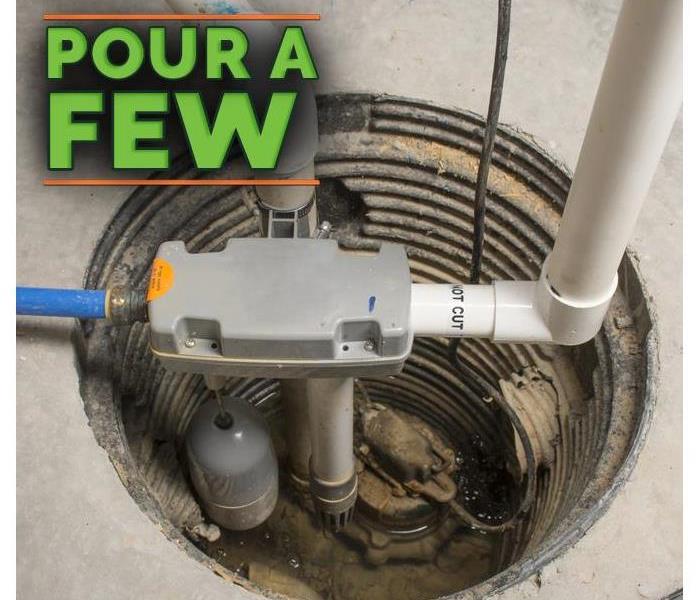Saving a Flooded Basement
11/4/2022 (Permalink)
Saving a Flooded Basement
If your basement has been flooded, you need to act quickly. Water can cause mold and mildew to grow, which will make your San Antonio, TX home uninhabitable. If your basement has flooded, the first step is to stop the water from entering. If you haven't already done so, shut off your main water valve and turn off any individual faucets that may be letting in water.
Next comes removing as much of the water from your basement as possible. There are two ways to do this: you can use a sump pump or hire professionals who specialize in draining flooded basements.
Sump pumps are usually installed after a basement waterproofing job or new construction so that they can help remove any excess moisture from beneath floors and walls before it causes serious damage to these structures (and potentially damage to other parts of your home). They're also used when flooding occurs outside an already-installed drainage system—for example, when heavy rains come through during springtime thaw periods—or if there's been some sort of accident involving broken pipes inside homes without proper drainage systems installed beforehand.
If you choose this method for removing excess water from below ground level then make sure all drains are clear before starting up again!
What kind of pump is best to remove water from the basement?
When evaluating the type of pump you need to remove water from your basement, it's important to know a few key performance characteristics.
First, there's the size of the pump; different models come in different sizes and can move more or less water. Next, there's how much power it takes to operate the pump—a bigger motor means more power, which translates into faster evacuation times. Finally, there are some pumps that are specifically designed for use with sump pits and other low-lying areas where an ordinary submersible model may not be effective at extracting water from underneath the surface of your home's foundation.
To make sure you get exactly what you need from our selection of pumps, here are some specs that may help guide your decision:
- Gallons per minute (gpm) refers to how much liquid a particular model can pump per minute through its rotating impeller blades at maximum capacity (or "flow rating").
- Horsepower (hp) refers to how much energy is required by each unit over time while operating under optimal conditions (i.e., fresh batteries).
Drying Out the Basement
To dry out a flooded basement, you will need to use fans, dehumidifiers, and wet/dry vacuums.
Fans
Fans help in drying up water in basements by circulating air around it. The best way to use fans for this purpose is by installing them in one corner of your basement, so they can suck up all the dampness from other corners as well.
Dehumidifiers
Use a dehumidifier to remove excess moisture. Not only do they help remove excess moisture but also help reduce mold growth. Mold growth is common after a water damage event, so try to prevent it as much as possible.
You should always purchase high-quality equipment though because some cheaper ones tend to break down very quickly when used continuously over a long period of time.
How Long Does It Take to Dry Out a Basement?
The amount of time it takes for a flooded basement to dry out depends on several factors. First, the size of the basement will affect how quickly water evaporates. If there's a lot of space in your basement but not much water, it will take less time than if your basement is small and filled with standing water.
Second, how well you can ventilate your flooded basement and how well you're able to dry it out will also affect drying times.
Third, if your floors are wood or concrete and don't absorb moisture easily then this will play into how long it takes for them to dry out after being exposed for several days or weeks (if ever).
Pumping water out of the basement is one way to mitigate flood damage.
Drainage pumps are another popular option for removing water from your flooded basement. These devices come in a variety of sizes, ranging from small-scale pumps that can be operated by one person to large-scale systems that require two people and higher amounts of electricity. They're incredibly easy to install and operate—just plug the pump into an outlet, connect it to your sump pump (or other drainage sources), then turn on the device and wait for the water to be removed from your home.
A similar product is called an electric submersible pump, which is specifically designed for use in flood-prone areas or homes with high groundwater levels. These are also fairly simple to operate: just place them inside your sump hole and turn on the power switch!
If you have a flooded basement and you need to pump water out, there are several options. The best solution is to call SERVPRO of Northwest San Antonio to take care of it for you. Give us a call!






 24/7 Emergency Service
24/7 Emergency Service
